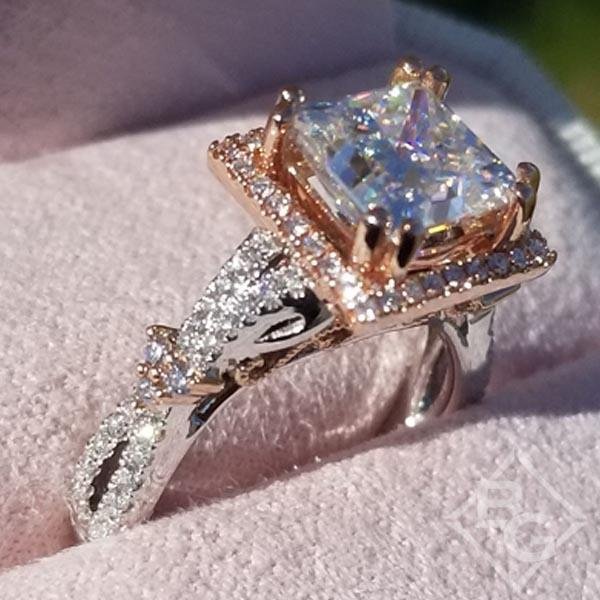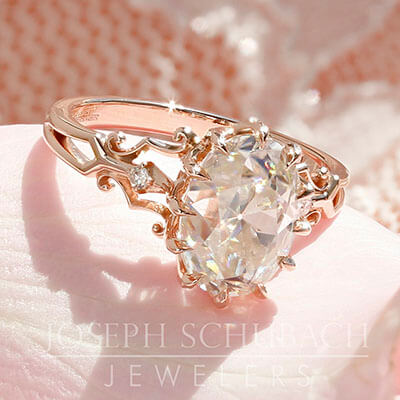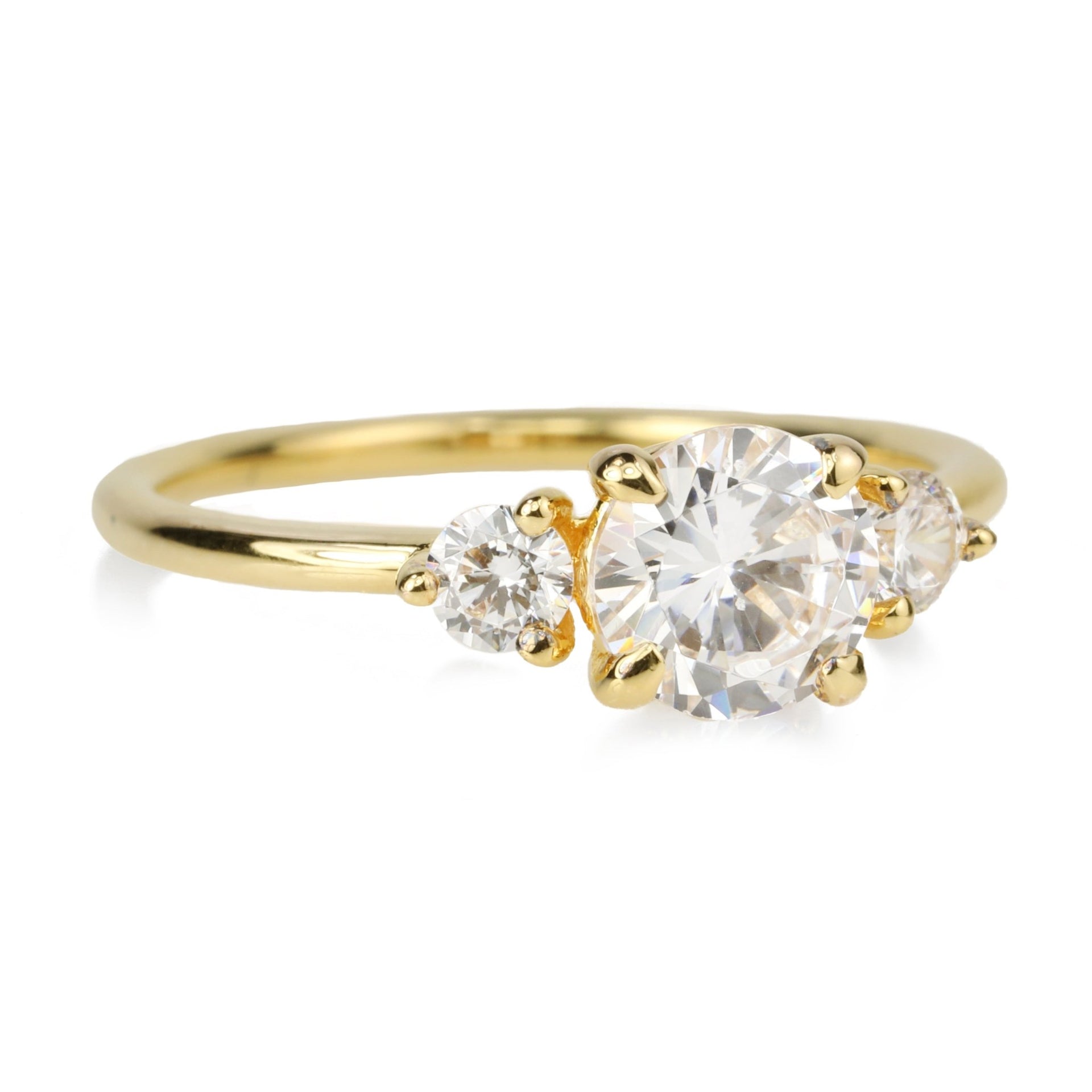What Gemologists Say About the Quality of lab grown diamond engagement rings
Wiki Article
Why Laboratory Grown Diamond Interaction Rings Are the Perfect Choice for Eco-Conscious Couples
Lab-grown Diamond engagement rings present an engaging option for pairs who focus on sustainability. These diamonds supply a striking alternative to traditional extracted rocks, substantially minimizing environmental injury. They are produced using advanced strategies that ensure both top quality and sparkle. As awareness of honest sourcing expands, lots of pairs are reconsidering their selections. What effects does this change have for the future of the Diamond industry?

The Ecological Influence of Traditional Diamond Mining
Although Diamond mining has long been commemorated for its allure and prestige, the ecological effects of traditional mining methods are increasingly worrying. The extraction of diamonds frequently includes extensive land disturbance, leading to deforestation and habitat loss for numerous varieties. Furthermore, the procedure takes in vast amounts of water, which can deplete regional sources and negatively affect surrounding neighborhoods. Hazardous chemicals made use of in mining procedures can contaminate nearby water resources, even more endangering both human populaces and wildlife.Additionally, the carbon impact connected with delivering extracted diamonds contributes to the total ecological toll. The heavy machinery and devices required for mining operations contribute considerably to greenhouse gas emissions. As awareness of these concerns expands, many consumers are starting to question the sustainability of conventional Diamond sourcing. This shift in point of view highlights the urgent demand for more eco-friendly options, such as lab-grown rubies, which guarantee to decrease the environmental impact while maintaining the elegance and worth of Diamond precious jewelry.
The Refine of Producing Lab-Grown Diamonds
Lab-grown rubies are produced via 2 primary approaches: High Pressure Heat (HPHT) and Chemical Vapor Deposition (CVD) The HPHT process resembles the natural conditions under which diamonds create in the Earth's mantle. It includes subjecting carbon to extreme pressure and temperature, leading to the formation of carbon atoms into Diamond structures. In comparison, the CVD approach permits the growth of diamonds in a controlled atmosphere. This technique makes use of a gas blend including carbon, which is energized to create plasma, making it possible for carbon atoms to down payment onto a substratum and grow layer by layer right into Diamond crystals.Both methods create rubies that are chemically and literally identical to all-natural rubies - lab grown diamond engagement rings. The choice of technique frequently depends upon the desired qualities and size of the final treasure. This ingenious approach to Diamond production not just provides a lasting option but also enables for higher transparency in the sourcing of materials
Quality and Brilliance of Lab-Grown Diamonds
While lots of may think that lab-grown diamonds vary in top quality from their natural counterparts, they in fact exhibit comparable brilliance and aesthetic charm. Lab-grown diamonds are created making use of innovative technology that duplicates the natural problems under which rubies create, resulting in rocks that possess identical physical and chemical properties. These diamonds attain the exact same outstanding clarity and color grading as mined rubies, making them identical to the nude eye.In regards to brilliance, lab-grown rubies typically present exceptional light performance because of their precision-cut aspects. The rigorous quality assurance throughout manufacturing warranties that these diamonds meet high requirements, improving their aesthetic attraction. Furthermore, they are readily available in a variety of sizes and shapes, enabling couples to discover the excellent ring to match their individual design. Ultimately, lab-grown diamonds offer an elegant mix of appeal and high quality, making them an attractive selection for engagement rings.
Honest Factors To Consider in the Diamond Market
As consumers end up being progressively mindful of the honest implications surrounding Diamond sourcing, the discussion around the Diamond industry has shifted noticeably. Worries about dispute diamonds, commonly described as "blood rubies," have prompted ask for better transparency and accountability in mining techniques. These rubies are mined in war areas and marketed to fund armed problem, increasing major ethical concerns for consumers. Additionally, the environmental influence of conventional Diamond mining has actually come under examination, with issues such as habitat destruction and water air pollution regularly highlighted.In feedback, many have transformed to lab-grown rubies as an extra moral option. These stones are created in regulated atmospheres, getting rid of the threats connected with mining. Consequently, lab-grown diamonds interest customers seeking to make liable options that straighten with their worths. The expanding demand for honest practices remains to reshape the Diamond industry, promoting humane Resources and sustainable sourcing methods.
Cost-Effectiveness of Lab-Grown Diamonds
Lab-grown rubies offer a compelling alternative for customers looking for affordable interaction rings - lab grown diamond engagement rings. Priced considerably reduced than their natural equivalents, they offer excellent worth for cash without compromising high quality or appearance. This affordability makes lab-grown rubies an eye-catching choice for budget-conscious couplesReduced Cost Point
Several couples are discovering that choosing lab-grown Diamond involvement rings can significantly reduce their general expenses without giving up high quality or elegance. These rubies normally cost 30% to 50% much less than their extracted counterparts, making them an appealing choice for budget-conscious customers. The cost advantage arises from lower manufacturing prices and an extra effective supply chain, which eliminates the expenses related to mining. As an outcome, couples can invest in larger rocks or even more elaborate setups, enhancing website link the overall visual of their rings. This affordability not just permits for a more tailored selection but likewise lines up with the worths of eco-conscious couples who focus on sustainability while remaining financially savvy. Lab-grown diamonds give a perfect blend of elegance and economy.Value for Money
The cost-effectiveness of lab-grown diamonds expands past their preliminary rate, offering outstanding worth for cash. Unlike all-natural diamonds, lab-grown options can be approximately 40% cheaper while maintaining the same physical and chemical buildings. This cost enables pairs to purchase larger or higher-quality stones without surpassing their budgets. The resale worth of lab-grown diamonds is slowly enhancing, making them an extra viable choice for future economic factors to consider. Furthermore, lab-grown rubies typically include reduced ecological and moral prices, offering pairs with assurance. By selecting lab-grown rubies, eco-conscious couples not just conserve money but likewise add to lasting methods, enhancing their general value suggestion in the fashion jewelry market.
Customization Options for Lab-Grown Engagement Rings
Just how can couples guarantee their engagement ring reflects their unique love story? Customization choices for lab-grown Diamond interaction rings supply an excellent remedy. Couples can select from numerous Diamond shapes, consisting of round, princess, or oblong, enabling them to select a style that resonates with their personal visual.Additionally, they can pick the setting-- be it solitaire, halo, or vintage-inspired-- making sure the ring matches the Diamond's sparkle. Metal selections, such as white gold, yellow gold, or climbed gold, additionally boost customization, providing to specific preferences.
Furthermore, pairs can integrate purposeful engravings, including an emotional touch that signifies their bond. With these considerable customization alternatives, lab-grown Diamond engagement rings not just embody a couple's love yet also mirror their worths, making them an ideal option for eco-conscious collaborations. Inevitably, these rings become a true representation of their unique trip with each other.
Often Asked Inquiries
Exactly How Do Lab-Grown Diamonds Contrast to All-natural Diamonds in Value?
Lab-grown diamonds generally cost 20-40% less than natural rubies, offering comparable high quality and appearance. Their reduced cost point makes them an attractive alternative, specifically for budget-conscious customers looking for moral and lasting options in precious jewelry.
Are Lab-Grown Diamonds Much More Resilient Than All-natural Diamonds?
Lab-grown rubies possess the very same physical and chemical properties as all-natural rubies, consisting of durability. Both types score an excellent 10 on the Mohs range, making certain that lab-grown diamonds are just as resistant to scratching and damage.Can Lab-Grown Diamonds Be Marketed Conveniently?
Lab-grown rubies can be resold, but their market need varies contrasted to all-natural diamonds. While some buyers value their honest beginnings, others might choose all-natural options, possibly influencing resale value and convenience of purchase.What Are the Treatment Recommendations for Lab-Grown Diamonds?
Lab-grown rubies call for normal care to preserve their sparkle. Cleansing with light soap and cozy water, using a soft brush, and avoiding severe chemicals will aid protect their sparkle and stability anonymous for many years to come.Are There Any Type Of Qualifications for Lab-Grown Diamonds?
Lab-grown rubies can be accredited by credible organizations such as the Gemological Institute of America (GIA) and the International Gemological Institute (IGI) These qualifications assure quality, credibility, and adherence to sector standards for lab-created gems.Both approaches create rubies that are chemically and literally the same to natural rubies. Lab-grown rubies are produced utilizing innovative innovation that replicates the natural conditions under which rubies develop, resulting in rocks that have similar physical and chemical residential or commercial properties. Lab-grown rubies commonly set you back 20-40% less than natural diamonds, offering comparable top quality and look. Lab-grown rubies possess the same physical and chemical buildings as all-natural rubies, including sturdiness. Lab-grown rubies can be re-selled, but their market demand differs contrasted to natural diamonds.
Report this wiki page